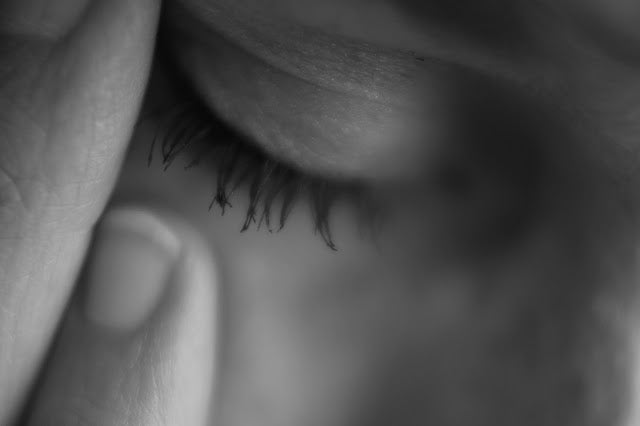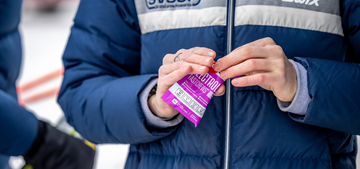SaltStick
Sleeplessness, Stress and Headaches: How Salt May Help Alleviate These Three Common Conditions
Jul 08, 2015

 We’ve blogged before about the chronic medical conditions that can be alleviated through salt intake (including migraines, POTS, Addison’s Disease, and more), but there are many more conditions which can be helped by eating salt. We put “conditions” in quotation marks because the following three maladies are not chronic and can afflict anyone. In fact, sleeplessness, stress, and headaches can sometimes be linked to low sodium intake as a cause. We’ll explain below.
Note that this blog post is not a reason to throw caution to the wind and begin flying through salt shakers. The USDA and American Heart Association both warn of the dangers of overdoing it with sodium. However, sodium is necessary for a variety of bodily functions, such as sweating and blood flow, and it is quite possible to restrict salt intake too much. The next time you suffer from one of the following symptoms, step back and ask yourself: Are you craving salt? If so, a lack of sodium may be the cause.
Tweet this post! "All you need is salt! Check out how salt can relieve three common maladies via @SaltStick!"
We’ve blogged before about the chronic medical conditions that can be alleviated through salt intake (including migraines, POTS, Addison’s Disease, and more), but there are many more conditions which can be helped by eating salt. We put “conditions” in quotation marks because the following three maladies are not chronic and can afflict anyone. In fact, sleeplessness, stress, and headaches can sometimes be linked to low sodium intake as a cause. We’ll explain below.
Note that this blog post is not a reason to throw caution to the wind and begin flying through salt shakers. The USDA and American Heart Association both warn of the dangers of overdoing it with sodium. However, sodium is necessary for a variety of bodily functions, such as sweating and blood flow, and it is quite possible to restrict salt intake too much. The next time you suffer from one of the following symptoms, step back and ask yourself: Are you craving salt? If so, a lack of sodium may be the cause.
Tweet this post! "All you need is salt! Check out how salt can relieve three common maladies via @SaltStick!"
Sleeplessness: I keep waking up during the night.
The relationship between salt and sleep has been studied as far back as the 1980s, when a study out of the University of Washington in Seattle found a positive correlation between sodium intake and sleep quality. Scientists placed nine 23-year-old men on low-, normal- and high-sodium diets. During the first phase of the study, the men only consumed about 500 milligrams a day (for reference, the USDA suggests we consume 2,300 mg per day), and they woke up during the night nearly twice as often and got about 10 percent less sleep than when they were on normal diets, which included 2,000 mg daily. Interestingly, in the last phase of the test, when the participants consumed about 5,000 mg a day, they slept longer and with slightly fewer nighttime wakings than when they were on normal diets. Admittedly, a sample size of nine is very small, and the researchers were quick to caution readers from believing more salt necessarily caused better sleep. They also warned that people with high blood pressure should continue to keep their sodium intake low, because the benefit from a low-sodium diet with respect to blood pressure outweighs its detrimental effect on sleeping. Nevertheless, the findings may lead to a better understanding of why people tend to have increasing difficulty sleeping as they get older, Dr. Michael Vitiello, the director of the sleep and aging research program at the University of Washington in Seattle, told The New York Times in an article about the study. He posited that low levels of sodium in the blood cause blood volume to decrease, and the sympathetic nervous system becomes more active in order to compensate. This causes sleepers to wake up more often and have difficulty going back to sleep. More recently, researchers in 2012 found that sodium depletion can trigger overtraining-like symptoms, including sleeping disorders. One participant in the study habitually consumed a low-sodium diet and repeatedly experienced overtraining symptoms after two weeks of moderate exercise. Researchers found that increased sodium intake (instead of lengthy rest and recovery) helped the subject recover from the overtraining. Again, the sample size is very small, but these results do help corroborate the earlier study linking low sodium intake to fitful sleep.Stress: My mind is racing.
In 2011, the Journal of Neuroscience published a study which examined the effect of hypernatremia (or elevated sodium levels in the blood) on neurological activity. Scientists found that rats responded less negatively to physical and psychological stressors when blood-sodium levels were high. The scientists also found that levels of the hormone oxytocin (a "feel-good" hormone) were elevated in the hypernatremic rats. The scientists concluded that high salt levels correlated with lower stress responses in the rats.
Headaches: My forehead has a dull throb.
We already blogged about salt’s effects on migraines, and we suggest you check out that post here. In addition to the skull-splitting effects of these nasty headaches, low salt levels can also cause the duller, more muted headache. In fact, one of the symptoms of hyponatremia most cited is headache. When salt levels in the blood decrease, the body compensates by moving water from the blood to surrounding cells. This is called edema, and the medical community believes hyponatremic headaches are partly caused by this swelling. Be careful, though! A recent study, published in December 2014, found that high salt levels (in subjects who consumed more than 8,000 mg a day) contributed to 30 percent more headaches than those who consumed 4,000 mg per day. (For reference, 8,000 mg is the amount of sodium contained in 12 slices of pizza or about 25 large McDonald’s french fries.) This again emphasizes the point that moderation is necessary for optimal results from salt intake.Key takeaways: How to manage your salt intake:
While low salt levels are correlated with things like sleeplessness and headaches, balance still matters. We are not advocating you go crazy with the table salt tonight. High sodium (especially when combined with low potassium) can throw your body’s salt ratios out of whack, so it is important to stick to a healthy range of sodium intake. That range is different for people, depending on age, gender, exercise level and climate. However, the following tips will help optimize your intake:- Salt to taste: One cause for salt cravings is simply low sodium levels. There’s no need to abandon the salt shaker when making meals, and salting your food to taste will allow you to respond to your body’s natural signals, especially if your meals are made from whole, minimally-processed foods.
- Replace electrolytes lost through exercise: Sodium accounts for the majority of electrolytes lost through sweat, especially if you are a salty sweater and routinely see white streaks on your skin after you finish exercising. That lost sodium should be replaced, or else you run the risk of low sodium levels. Essentially, light sweaters or smaller individuals should consider 1 SaltStick Cap per hour. Heavy sweaters, larger individuals, or those in hotter conditions should consider 2-3 SaltStick Caps per hour. The best strategy for success is to practice your nutrition strategy during training so you can optimize for what works for you, and then execute that during racing. We provide a complete suggested usage guide here: Training with SaltStick Capsules.
- Eat lots of fruits and vegetables: At the risk of sounding trite, we’d be remiss if we didn’t include this last tip. Plants, and especially fruits, are full of natural potassium, which helps counterbalance sodium levels if you happen to go overboard with the salt shaker. Potassium is also lost through sweat, which is why each SaltStick Capsule contains this key electrolyte.








